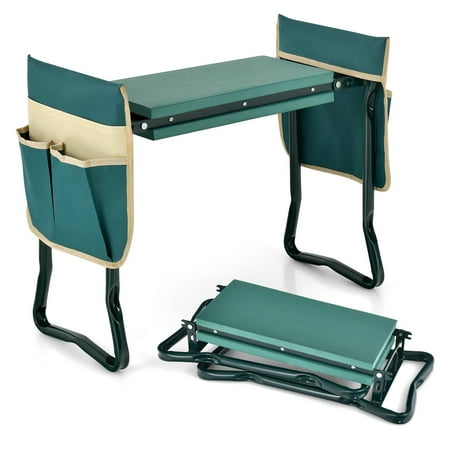7 unusual bulbs to plant in fall – these rarely seen beauties are all easy to grow too
These eye-catching but lesser-known bulbs definitely deserve a space in your spring yard


The air is getting crisper in the morning, which means it's that time of year when thoughts turn to planting bulbs for next spring and summer. But as you flip through the bulb catalog this time around, think twice before you place your usual order.
There's a whole world of gorgeous bulb choices that might be less familiar, but just as spectacular when in bloom, instead of the traditional favorites like daffodils and hyacinths. Seek out new, standout varieties to add to those you already love to give your fall bulb planting a fresh new take.
Our experts have chosen seven of the best unusual bulbs to plant in fall that truly deserve a place in your borders and containers alongside more established varieties. These beauties will take your spring bulbs to the next level and will soon become a permanent fixture in your garden.

Blue camassia are beautiful but why not try a more unusual pink one?
The best unusual spring bulbs to plant in fall
Mix up those well-established choices by adding some unusual bulbs to plant this fall season. There are some real standout varieties here, especially if you like the idea of picking some tall flower types to add a majestic touch to your spring garden ideas.
1. Pink camassia

The rare Camassia leichtlinii 'Aurora' has star-shaped blooms of light mauve-purple, fading to a very pale pink
USDA zones: 4-8
Other names: Californian quamash, wild hyacinth
Camassia is an underused bulb that flowers in late spring to early summer. The flowers come mostly in shades of blue but there are more unusual varieties to be found in white or pink.
The flowers bloom for a long period. The large racemes of star-shaped powder blue, creamy white or pale pink petals with yellow anthers and pale green centers are stunning, and will add a strong vertical accent to planting.
Design expertise in your inbox – from inspiring decorating ideas and beautiful celebrity homes to practical gardening advice and shopping round-ups.
These are lovely bulbs and should be grown more often as they are reliable and hardy. Another plus is that they thrive in tricky spots such as dry or damp shade. There’s no need to lift them once planted either. For pale pink flowers, look out for ‘Pink Star’ as well as 'Aurora' (pictured).
'Several species of camassia are native to the United States,' says horticulturalist Peggy Anne Montgomery. 'They have strappy, low-growing basal foliage and one long-flowering stem that grows to about 15-18 inches tall on strong stems that don’t need staking.'
Find out how to grow camassia as now is the time to plant them. They are easy to grow in moist, well-drained soil, adds Peggy. 'They can handle drier conditions as they go dormant in summer. They bloom best in full sun but will tolerate light shade. They attract pollinators, and are fairly deer and rodent-resistant.'

Peggy Anne Montgomery is a horticultural professional with more than 30 years' experience in garden marketing and communications. An account executive for the Garden Media Group, she currently represents Dutch Royal Anthos, a trade organization for Dutch bulb growers and exporters in the US and Canada.
2. Allium nigrum

USDA zones: 2-10
Other name: Black garlic
It's easy to forget that fall is the time to plant alliums as they're more associated with the early spring garden. It's also easy to overlook the fact that the best varieties of allium bulbs come in crisp white varieties as well as the regulation purple and mauve ones.
The simple-to-grow heirloom bulb allium nigrum (the black seed capsules are how it gets the name) looks stunning when planted en masse, spreading over time to fill in spaces in the garden.
'Allium nigrum is one of my favorites because it's so strong and multiplies well, and also grows happily in partial shade,' says bulb expert Jacqueline van der Kloet. 'The flowers make an appearance in mid-May and last for a long time. At about 30 inches in height, this is an impressive species.'

Jacqueline van der Kloet is an internationally-acclaimed garden designer and one of Holland’s best-known gardening authorities. Her landscape designs are prized for their beauty, naturalized schemes, and bold use of color. Jacqueline’s client list includes some of the most prestigious public gardens in the world. In North America, she teamed with Piet Oudolf for innovative plantings at New York’s Battery Park, New York Botanical Garden, and Chicago’s Lurie Garden.
3. Spring star flower

USDA zones: 5-9
Other names: Ipheion uniflorum, Mexican starflower
Spring star flowers have dainty flowers ranging in color from almost white to blue and periwinkle. They bloom on six inch stems in late winter and early spring, and each bulb produces several flowering stems.
'They are considered very easy to grow and tolerate a wide range of well-drained soils,' says Peggy Anne Montgomery. 'They prefer full sun to light shade. These are perfect for naturalizing in lawns, rock gardens, and other areas, as they multiply by bulb offsets and from seed.'
If you're looking for something a little different to star in your spring garden be sure to add this variety to your list. Another plus is that the flowers are sweet-scented, giving you a subtle hit every time you pass by.
4. Fritillaria persica 'Ivory Bells'

USDA zones: 4-8
Other names: Persian lily, Persian bell
If you're looking for unusual bulbs to plant in fall that add a touch of majesty, then your search is over. This stunning variety of fritillaria is rarely seen and offers a real head-turning moment in the spring garden with its beautiful racemes of bell-shaped flowers that turn from lime green to creamy ivory during the season.
It grows up to 3 feet tall too, blooming from mid to late spring and adding height as a point of difference to the rest of the low-lying spring bulbs.
Plant 8 inches deep in soil that is moist, airy and rich in humus. Add some fertiliser to the soil as these grow so fast they'll need feeding. They do best in full sun
If you want to add an edgy look to your garden, fritillaria persica also comes in an inky dark purple shade called 'Plum Bells' that's so dark it's almost black.
5. Tulip 'La Belle Epoque'

USDA zones: 3-8
Other names: none
If you are looking for more unusual color choices for spring bulbs, tawny shades and earthy tones are bang on trend right now. They add an organic feel to the garden, especially when paired with bronze, orange and pale yellow colors in the planting palette.
'Some of the most unusual color choices in the flower garden are the autumnal shades of brown, russet, amber, fawn, and chestnut,' says horticulturalist Jenny Rose Carey. 'If you're looking for these colors include tulips like 'La Belle Epoque' and 'Brown Sugar'. Follow these with a selection of brown-tinged bearded iris.'
A double-flowered late variety, you won't find any other tulip like 'La Belle Epoque'. In fact, it looks more like a flamboyant peony than a tulip. Find out how to plant tulip bulbs, which can go into the ground as late as November, to get the most out of your flowers. This variety will grow 15 inches tall and you will enjoy its blooms (are they pink, peach, apricot, cappuccino or a subtle mix of all these colors?) for weeks on end.
If you feel like channeling your inner florist 'La Belle Epoque' a great choice if you're planning a cut flower garden too.

Flower expert Jenny Rose Carey is the author of The Ultimate Flower Gardener's Guide, and former senior director at the Pennsylvania Horticultural Society's Meadowbrook Farm.
6. Foxtail lily

USDA zones: 5-8
Other names: Eremurus, Desert candles
'Foxtail lilies flower in early summer and are incredibly showy,' says Peggy Anne Montgomery. 'The long flower stems rise 3 to 4 feet tall with hundreds of individual blooms that flower in succession in shades of white, orange, pink, and yellow. They are unlike anything else.'
They like well-drained soil in a sunny location protected from wind. Plant them as soon as they arrive or are purchased, or they can dry out. Cover them with no more than 2 to 3 inches of soil.
One of the tallest flowers in the late spring/early summer garden, they make a dramatic punctuation mark in flower beds. If they like the spot you put them in they can grow as tall as 8 feet - be sure to give them plenty of space so they can spread their wings.
7. Wand flower

USDA zones: 8-10
Other names: Ixia, corn lily or African corn lily
The bright colorful blooms and sword-shaped leaves of the wand flower make it a popular choice if you're looking for something a little different to fill the gap between the late spring and early summer garden.
With tall spikes of star-like blooms in pink, yellow, and white, wand flowers are a great choice for any hot, sunny spot and work particularly well for Mediterranean garden ideas. They bloom in late spring, generally from May to June, and can be grown in colder zones too, as long as they're lifted in the fall and overwintered in a dry, frost-free place.
Perfect for filling gaps in flowerbeds or rock gardens, wand flowers will form clumps over time, so can easily be propagated by division in fall. They work well in containers too.
FAQs
What's the easiest way to plant bulbs?
The easiest way to plant bulbs is to put your trowel away, especially if you are planting lots of them, and get a bulb auger instead. This is a drill bit that you attach to a power drill that makes the job of planting bulbs super simple and so much faster as it literally lets you drill each hole in seconds.
Choose from long-shafted ones that let you plant bulbs standing up, or short-shafted ones that mean you do the job kneeling down. The best way to use them is to drill the hole, lift out the loosened soil and make a pile next to the hole. Once the hole is deep enough, pop a plant or a bulb in the bottom (pointy side up) and refill with the loose soil.
Find out more tips on how to plant bulbs if you don't have a power drill or simply want to do it the more traditional way.
The thing we most love about bulbs is that you forget you've planted them, then up they pop like magic. Now you have all the ideas you need for unusual bulbs to plant in fall, don't forget it's also a good time for browsing plant catalogs for the best summer bulbs too, especially if you love lilies, dahlias and agapanthus - and who doesn't?

Lifestyle journalist Sarah Wilson writes about garden design and landscaping trends for Homes & Gardens. She has studied introductory garden and landscape design, and also has an RHS Level 2 qualification in the Principles of Plant Growth and Development. She is a regular contributor to Homes & Gardens and Livingetc. She has also written for Country Living, Country Homes & Interiors, and Modern Gardens magazines


